
Public Health
- (Belgium) Found a mealworm in Delhaize rooibos “tea”. Return refused. Food safety report ignored. Do we rely on Twitter for food safety?

It may be difficult or impossible to control food quality well enough that every container be mealworm-free. But I expect metrics to be kept so someone can monitor whether or not a supply chain is doing something notably reckless.
Delhaize history
Delhaize started off as a food producer who was regarded as a brand of high quality products. Then they became a big grocery store chain. So of course they sell their own products. And in fact I have never seen Delhaize products sold by other stores.
. When I tried to return the rooibos, the CSR asked for a receipt. I did not have one, so he refused. I said: look, it’s brand of the store, so of course it came from here. He argued that it may not have come from /this/ precise store.
I don’t give a shit about getting a 2 euro refund. My whole point was to get the incident recorded so they can look into QA issues. So then I reported this to the food safety authority in Belgium. It’s possible they acted on it, but they sent no acknowledgement. Which effectively signals to consumers they are wasting their time by reporting quality issues.
Is this all normal? I would expect a public health agency to be keen to encourage reports of worms packaged in food.
I think the norm is (sadly enough) to use Twitter. Someone tweets “worm in my food” with a good photo, it gets some attention, then the supplier is forced to try to remedy their embarrassment. This hack doesn’t work for non-Twitter non-Facebook users.
(edit) attached a pic
- Creepy crawly found living in Brussels toilet. Help needed solving this mystery.lone.earth Creepy crawly found living in Brussels toilet
This creepy crawly was found living in a toilet in Brussels. Help me solve the mystery of what it is and how it got there. Is it a parasite? Hookworm, or roundworm? I have not used the toilet for...

This creepy crawly was found living in a rarely used toilet in Brussels.
I was alarmed to find it. Is it a parasite? Hookworm, or roundworm?
Some history:
This is a rarely used part of the house. One day I discovered the toilet bowl was teeming with sewer drain fly larvae. Also creeped me out until I worked out what I was looking at. I’m not bothered about drain flies so I just left it alone. Returned to the toilet a couple months later and the trap was bone-dry. There was a hard blob of something.. mud, limescale, I don’t know. Not sure how it got there. It was the size of a golf ball so more mass than I would expect from limescale. I used a strong acid to descale the toilet. I made the toilet sparkling clean.
Then I used the trap to clean a dread-lock style mop because I could stuff it in there and squeeze out the the grime. And the mop could also reach deeper into the trap to clean the toilet better. Toilet water would become instantly black but easy to flush and repeat. After 10 or so iterations the water was still gray so I gave up.. maybe the mop should be bleached.. so I put the mop away. The mop was previously used to clean up cat urine (neighbors cat keeps entering my house, peeing on the livingroom floor and stairs, then bailing.. does not hang-out [why mark in a territory it does not intend to use?]). Anyway, I did not defecate in the toilet after cleaning it. Maybe urinated a couple times over the span of a couple months.
Then out of the pure blue I find this creepy crawly. Should I bring this thing to a doctor? I cannot work out how it got there or if it came from me. Perhaps equally important are the sand grains (50 or so?) around it.
theory 1: it entered the cistern from the Brussels water supply, perhaps as an egg. Hatched in the cistern. Brussels water contains sand which builds up at the screens of the tap airators and also in the cistern. A typical flush does not bring any noticable sand into the toilet bowl, but maybe if a worm were in the cistern it would have moved the sand around so that a pinch of sand would go in a flush, along with the worm.
theory 2: it came in from the Brussels water supply and ended up in the sewer pipes like most of the water does, grew in the sewer pipes and crawled up into the toilet trap from the sewer side. As it crawled, sand and scum from the sewer pipe stuck to it and washed off it when it entered the trap.
theory 3: it came out of me and ended up in the sewer pipes and crawled into the toilet. No!!! I hope not. But if so, it’s the lower floor toilet that I use, so the worm would have to do a straight up vertical clime 1 story high inside of PVC. Seems unlikely.
theory 4: I leave the window open most of the time and the toilet seat up, so a bird could have flown in and dropped something in the toilet.
They all seem unlikely.
- Growth the size of a melon: a scrotum-swelling disease threatening thousandswww.theguardian.com Growth the size of a melon: a scrotum-swelling disease threatening thousands
Efforts to eradicate the disfiguring mosquito-borne infection lymphatic filariasis are advancing, but it is still rife in 51 countries
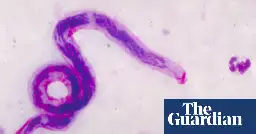
cross-posted from: https://lemmy.zip/post/25102568
> > Efforts to eradicate the disfiguring mosquito-borne infection lymphatic filariasis are advancing, but it is still rife in 51 countries > > Archived version: https://archive.li/q2b8x > > SpinScore: https://spinscore.io/?url=https%3A%2F%2Fwww.theguardian.com%2Fglobal-development%2F2024%2Foct%2F25%2Fgenital-swelling-disease-mosquito-borne-infection-lymphatic-filariasis-hydrocele
- Egypt declared malaria-free after 100-year effortwww.bbc.com Egypt declared malaria-free by World Health Organization
The World Health Organization says the disease "that plagued pharaohs" now belongs to Egypt's history.
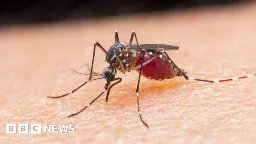
cross-posted from: https://lemy.lol/post/33029459
> cross-posted from: https://lemy.lol/post/33029458 > > > “Malaria is as old as Egyptian civilization itself, but the disease that plagued pharaohs now belongs to its history," said WHO chief Tedros Adhanom Ghebreyesus.
- Cockroach milk healthier than almond milk? Yes, in fact could be among “the most nutritious substances on earth”
Woah.. ho.. Gotta love that clickbait title. I’ll cut to the chase though- more research is needed before you can get roach milk on the shelf. From the article:
“But today we have no evidence that it is actually safe for human consumption.”
“Plus roaches aren't the easiest creatures to milk.”
- Elevating the Culture of Blood Donation: A Call for Meaningful Incentives
Elevating the Culture of Blood Donation: A Call for Meaningful Incentives
Blood donation, an act that transcends mere charity, represents the quiet heroism that sustains modern healthcare. It is a selfless offering, an intimate gift of life passed from one human to another, often a stranger. And yet, despite its profound significance, donor rates continue to wane in the face of rising demand. As someone with a multifaceted background in psychology, healthcare, and business, I believe we must reimagine how we value and encourage blood donation, honoring its role in our collective well-being with the gravity it deserves.
The Psychological Imperative: Motivating Altruism through Thoughtful Engagement
Human behavior, when examined through the lens of psychology, reveals a complex interplay between intrinsic and extrinsic motivations. Altruism, though noble, is not immune to the realities of modern life. Time constraints, fear, or a lack of personal connection to the cause can inhibit even the most well-meaning individuals from participating in blood donation efforts. Herein lies the challenge: How do we create incentives that not only encourage participation but also respect the enormity of the act?
Psychological studies on motivation suggest that incentives—when aligned with the personal values and emotional needs of individuals—can significantly influence behavior. However, the incentives we offer must do more than tokenize the act of giving blood. After all, donors are contributing something deeply personal, their very life force. To present them with a nominal reward—such as a $10 gift card—seems a stark undervaluation of their contribution. Instead, we must seek to inspire through incentives that resonate with the magnitude of the donation.
Medical Realities: Blood, A Priceless Resource with Tangible Costs
From a medical standpoint, blood is more than a precious fluid; it is a lifeline. A single unit, processed and administered, can mean the difference between life and death for multiple patients. Yet the economics of blood donation often remain hidden from public view. The cost of testing, processing, and delivering a half-liter of blood typically ranges from $200 to $400. This reality, however, is juxtaposed against the modest compensation most donors receive, creating a disconnect between the invaluable nature of the resource and the rewards offered to those who provide it.
As someone deeply acquainted with the medical field, I understand that the value of blood transcends financial measures. Yet the act of giving blood, the personal sacrifice made by the donor, should be met with a gesture that honors both the physical and emotional commitment of the individual. Here, my experience in business and advertising offers a pathway toward more meaningful recognition.
The Confluence of Business and Health: Redefining Value in Incentive Programs
In the realm of business, we understand that consumer engagement thrives on perceived value, and that participation is most often driven by the emotional resonance of an experience. Blood donation campaigns, though not a commercial enterprise, can benefit from this understanding. Rather than offering trivial rewards, we must craft incentives that speak to the heart of the donor’s contribution.
Nonprofits, often constrained by limited resources, need not rely on financial compensation alone to honor their donors. Instead, they can create community-centered experiences—opportunities for donors to connect with others who share their generosity. Imagine donor appreciation nights where participants gather for a shared meal, such as a pizza or barbecue dinner, followed by an outdoor movie screening beneath the stars. These events would provide more than a reward; they would offer a space for connection, reflection, and the cultivation of a shared sense of purpose.
A Vision for the Future of Public Health: Holistic and Humane Incentives
In reflecting on my diverse experiences across psychology, healthcare, and business, I see an opportunity for blood donation campaigns to evolve. It is time to embrace a holistic model of public health—one that recognizes not only the practical need for blood but also the profound emotional and social dimensions of the donation process. We must honor donors with incentives that reflect their sacrifice, not just in monetary terms but in the creation of meaningful, shared experiences.
Blood is not a commodity, nor should it be treated as such. It is the essence of life, and those who give it should be recognized accordingly. By rethinking the way we incentivize blood donation, we can cultivate a culture of gratitude, empathy, and collective responsibility. The future of public health rests not just in meeting immediate needs, but in inspiring individuals to become active participants in the ongoing narrative of human connection and care.
Let us rise to the occasion, offering incentives that are not only fair but awe-inspiring—reflecting the life-saving nature of the gift itself. In doing so, we elevate not only the act of giving blood but also the very spirit of humanity.
- [SciShow] Is Morning Sickness Actually Preventable?

YouTube Video
Click to view this content.
- Four more US health workers show symptoms after contact with Missouri bird flu patient
> Four additional healthcare workers in Missouri who came in contact with a hospitalized bird flu patient developed mild respiratory symptoms but the virus was not confirmed in any of them, U.S. health officials said on Friday. > > The report from the U.S. Centers for Disease Control and Prevention brings to six the number of healthcare workers who cared for the Missouri patient and developed respiratory symptoms. > > Unlike previous U.S. bird flu cases this year, the Missouri patient, who was hospitalized on Aug. 22, had no known contact with infected animals. Scientists are watching closely for signs that the virus has begun to spread more easily in people.
- CDC: Flu deaths in children reach troubling highs amid drops in vaccinationswww.usatoday.com CDC: Flu deaths in children reach troubling highs amid drops in vaccinations
Many of the deaths were preventable with vaccines, experts said.

cross-posted from: https://midwest.social/post/17030076
> This is why I will confront anti-vaxxers in public. > > Nearly 200 children died from influenza-related complications in the 2023-24 season, according to the CDC. Most of these children were eligible for a vaccine but did not receive one. The CDC reported that only 53% of children aged 6 months to 17 years were vaccinated this season, down from 56% the previous season. Vaccination rates were notably lower among Black children and those in rural areas. > >
- The World Federation of ADHD International Consensus Statement: 208 Evidence-based Conclusions about the Disorderwww.ncbi.nlm.nih.gov The World Federation of ADHD International Consensus Statement: 208 Evidence-based Conclusions about the Disorder
Misconceptions about ADHD stigmatize affected people, reduce credibility of providers, and prevent/delay treatment. To challenge misconceptions, we curated findings with strong evidence base.We reviewed studies with more than 2,000 participants or meta-analyses ...

- Rethinking Addiction as a Chronic Brain Diseasewww.nytimes.com Rethinking Addiction as a Chronic Brain Disease
Some researchers argue that the roles of social environment and personal choice have to be considered in order to make progress in treating people addicted to drugs.

- Puberty blockers 'safe, effective and reversible', finds review triggered by Westmead Hospital investigationwww.abc.net.au Puberty blockers 'safe, effective and reversible', finds review triggered by Westmead Hospital investigation
An independent review into gender-affirming care for children finds research still supports puberty suppression treatment as "safe, effective and reversible" but calls for more long-term quality studies.

- ‘Right to Repair for Your Body’: The Rise of DIY, Pirated Medicinewww.404media.co ‘Right to Repair for Your Body’: The Rise of DIY, Pirated Medicine
Four Thieves Vinegar Collective has made DIY medicine cheaper and more accessible to the masses.

- [SciShow] Is Co-Sleeping REALLY Dangerous?

YouTube Video
Click to view this content.
TL;DW: There are potential risks and potential benefits, and strategies to mitigate the risks. More research is needed, YMMV.
- World-first lung cancer vaccine trials launched across seven countrieswww.theguardian.com World-first lung cancer vaccine trials launched across seven countries
First patient in UK gets dose of jab designed to kill most common form of lung cancer – and stop it coming back
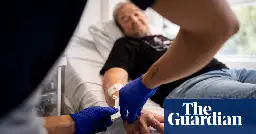
- Amazon is using my grocery purchases to sell me prescription drugswww.vox.com Amazon is using my grocery purchases to sell me prescription drugs
I ordered groceries from Amazon Fresh. Now I’m getting prescription drug recommendations.

- Why Mpox Vaccines Aren’t Flowing to Africans in Desperate Needwww.nytimes.com Why Mpox Vaccines Aren’t Flowing to Africans in Desperate Need
Drugmakers have supplies ready to ship that are necessary to stop a potential pandemic. But W.H.O. regulations have slowed access.
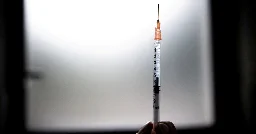
cross-posted from: https://slrpnk.net/post/12678087
- How Did Mpox Become a Global Emergency? What’s Next? - The New York Timeswww.nytimes.com How Did Mpox Become a Global Emergency? What’s Next?
The virus is evolving, and the newest version spreads more often through heterosexual populations. Sweden reported the first case outside Africa.
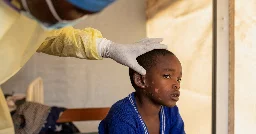
cross-posted from: https://pawb.social/post/13043788
- Mpox emergency declared in Africa amid surge in casesglobalnews.ca Mpox emergency declared in Africa amid surge in cases - National | Globalnews.ca
Africa's top public health body declared what it termed a 'public health emergency of continental security' on Tuesday over an outbreak of mpox.

- FDA Approves First Nasal Spray for Treatment of Anaphylaxiswww.fda.gov FDA Approves First Nasal Spray for Treatment of Anaphylaxis
The FDA approved the first nasal spray for the emergency treatment of allergic reactions in adult and certain pediatric patients.
- Childhood vaccinations will have prevented more than 500 million illnesses and 1 million deaths in US since 1994, CDC report says | CNNus.cnn.com Childhood vaccinations will have prevented more than 500 million illnesses and 1 million deaths in US since 1994, CDC report says | CNN
Routine childhood vaccinations will have prevented hundreds of millions of illnesses, tens of millions of hospitalizations and more than 1 million deaths among people born between 1994 and 2023, according to the US Centers for Disease Control and Prevention.

cross-posted from: https://midwest.social/post/15495672
> Routine childhood vaccinations will have prevented hundreds of millions of illnesses, tens of millions of hospitalizations and more than 1 million deaths among people born between 1994 and 2023, according to the US Centers for Disease Control and Prevention. > > A new report, published Thursday by the CDC, analyzed the benefits of routine childhood immunizations in the United States through the CDC’s Vaccines for Children Program, which launched in 1994. The research also found that the vaccinations saved the country billions of dollars.
- [SciShow] Medicine Cabinets Shouldn't Exist (in hot steamy bathrooms)

YouTube Video
Click to view this content.
TL;DW: Store medicine in a cool, dry, dark location.
- What is STSS, the deadly flesh-eating bacteria on the rise in Japan?www.independent.co.uk What is STSS, the deadly flesh-eating bacteria on the rise in Japan?
Over 1,000 cases of streptococcal toxic shock syndrome (STSS) were reported in Japan in the first six months of 2024
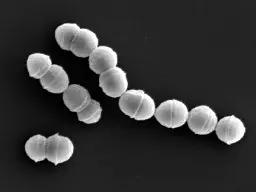
> Over 1,000 cases of streptococcal toxic shock syndrome (STSS) were reported in Japan in the first six months of 2024, surpassing the total number recorded last year in the country.
>Andrew Steer, director of infection, immunity and global health at Murdoch Children’s Research Institute in Melbourne, Australia has warned that those suffering from STSS often have no prior warning signs. > >“You tend to be well, and then become acutely quite sick,” he said, adding that a sunburn-like rash could also be one of the first indications of infection.
>The US reported 145 cases of STSS in 2021.
See also: https://www.diseasedaily.org/2024/07/23/the-rise-of-streptococcal-toxic-shock-syndrome-stss-in-japan/
- US Cancer Survivor Population Projected to Reach 26 Million by 2040www.cancertherapyadvisor.com US Cancer Survivor Population Projected to Reach 26 Million by 2040
Researchers estimated that, as of January 1, 2022, the prevalence of cancer survivors in the US was 18.1 million.

cross-posted from: https://midwest.social/post/14831085
> The prevalence of cancer survivors in the United States has risen in recent years and is projected to increase more in years to come, according to research published in the Journal of the National Cancer Institute. > > The researchers estimated that, as of January 1, 2022, the prevalence of cancer survivors in the US was 18.1 million. The team noted that this is a nearly 4-fold increase in cancer survivors since the mid-1970s.
- Coronary Inflammation Highest in Socioeconomically Deprived Areas: ORFANwww.tctmd.com Coronary Inflammation Highest in Socioeconomically Deprived Areas: ORFAN
The findings suggest a “potential therapeutic target” in the quest to reduce inequities in cardiac risk, a researcher says.

cross-posted from: https://midwest.social/post/14790845
> People living in areas with the highest levels of socioeconomic deprivation have more coronary inflammation identified on coronary CT angiography (CCTA) than those living in the least deprived areas, an analysis of the Oxford Risk Factors and Noninvasive Imaging (ORFAN) study shows.
- One dead from Nipah virus in India's Kerala state, state health minister says
cross-posted from: https://lemmy.zip/post/19515293
> > Authorities in southern India's Kerala state are taking preventive steps after the death of a 14-year-old boy from the Nipah virus and the identification of 60 persons in the high-risk category, the state's health minister said on Sunday. > > Archived version: https://archive.ph/nRECh
- Joan Avoids A Cold (1947)
Vintage public health educational film, please delete if it doesn’t fit here :) thx
- Improving HIV treatment in children and adolescents -- the right way · ScienceDaily | Public Health RSS Feedwww.sciencedaily.com Improving HIV treatment in children and adolescents -- the right way
Globally, around 2.6 million children and adolescents are currently living with HIV, the majority of them in Africa. These young people are much more likely to experience treatment failure than adults. Experts long assumed that testing for viral drug resistance could improve treatment in cases where...

- First case of 'staggering disease' in North America found in a Colorado mountain lionwww.scrippsnews.com First case of 'staggering disease' in North America found in a Colorado mountain lion
A mountain lion euthanized in Colorado last year had the first recorded case of “staggering disease” in the species in North America, Colorado Parks and Wildlife announced Tuesday.

> A mountain lion euthanized in Colorado last year had the first recorded case of “staggering disease” in the species in North America, Colorado Parks and Wildlife announced Tuesday. --- > "Of note, a remarkably broad range of other mammalian RusV hosts have been identified in Germany, including equids, mustelids, rodents, and marsupials, raising concerns about a zoonotic potential of RusV," the study concluded. "Given the wide host range of the virus in Europe, RusV should be considered as a possible cause for neurologic diseases in all mammal species in North America."
- YSK there is a massive Google Doc of U.S. gynecologists that will tie your tubes without asking about your kids, marital status or age.
cross-posted from: https://lemmy.world/post/17652243
> Over half of women who have had abortions have had a previous child. > > https://www.guttmacher.org/gpr/2007/05/repeat-abortion-repeat-unintended-pregnancy-repeated-and-misguided-government-policies
- Nearly half of U.S. counties don't have a single cardiologistwww.nbcnews.com Nearly half of U.S. counties don't have a single cardiologist
Around 22 million people live in counties that are "cardiology deserts" and need to travel nearly 90 miles round trip to seek specialty heart care.

cross-posted from: https://midwest.social/post/14297944
> Millions of Americans likely to develop and die from heart disease live in cardiology deserts — areas of the country without a single heart specialist to care for them. > > New research published Monday in the Journal of the American College of Cardiology finds that nearly half of all counties in the U.S. lack a practicing cardiologist. > > Most of those counties are rural, with residents who tend to be sicker in general with complex medical problems. > > “The counties that do not have cardiologists probably need this type of specialty care even more,” said the study’s senior author, Dr. Haider Warraich, a cardiologist at Brigham and Women’s Hospital in Boston.

